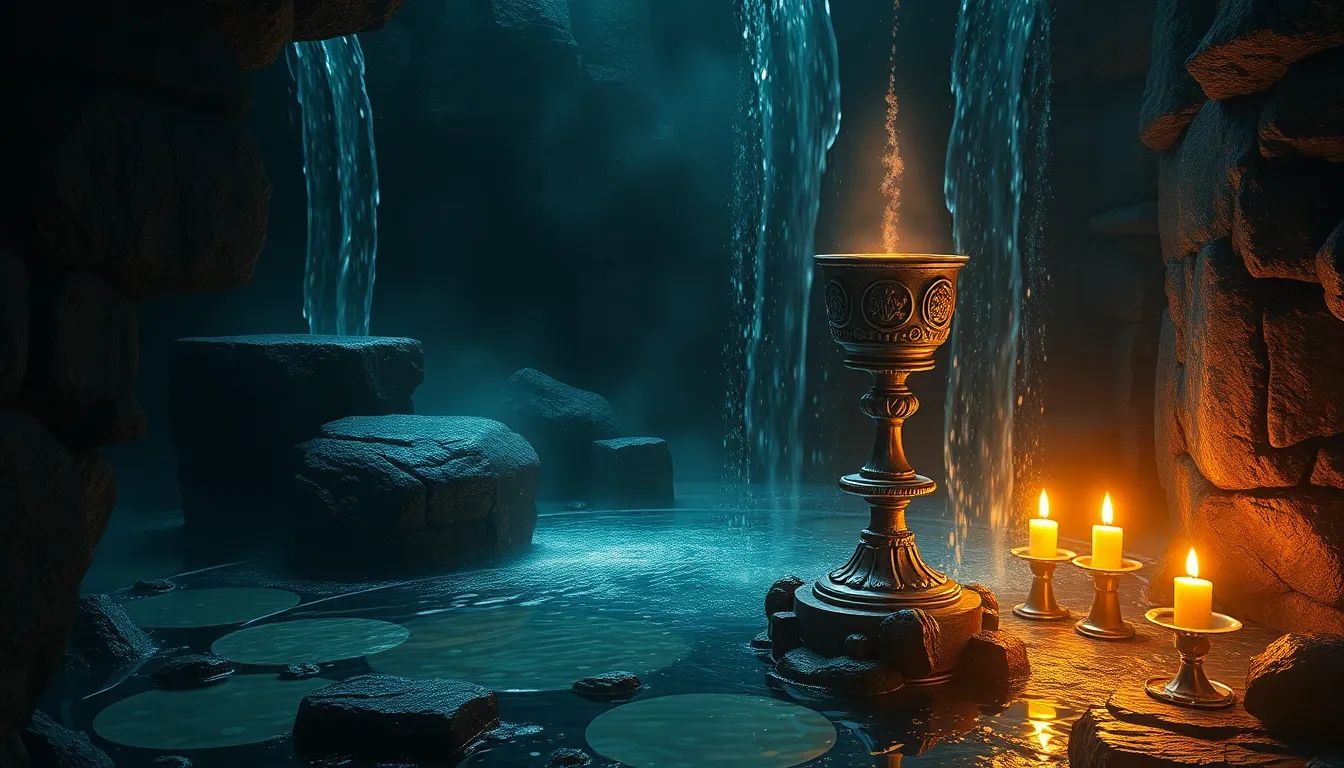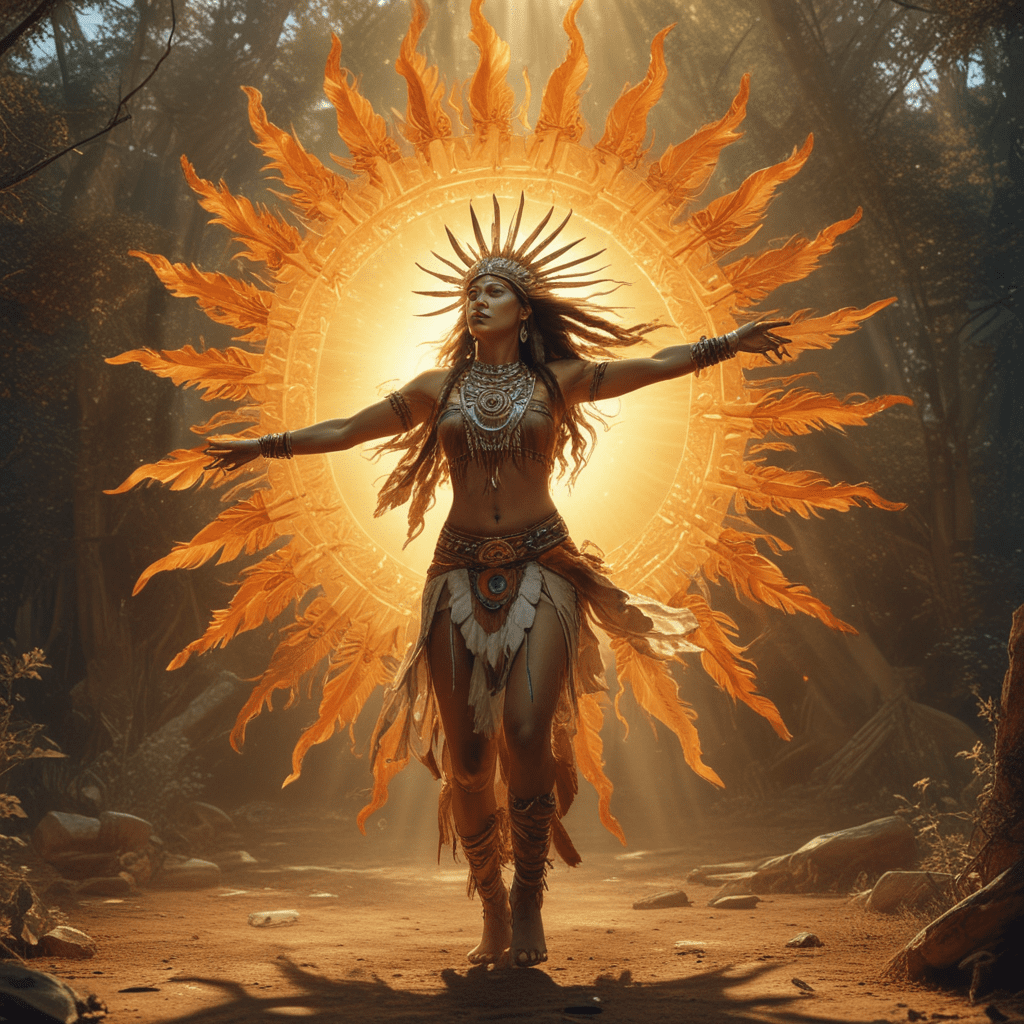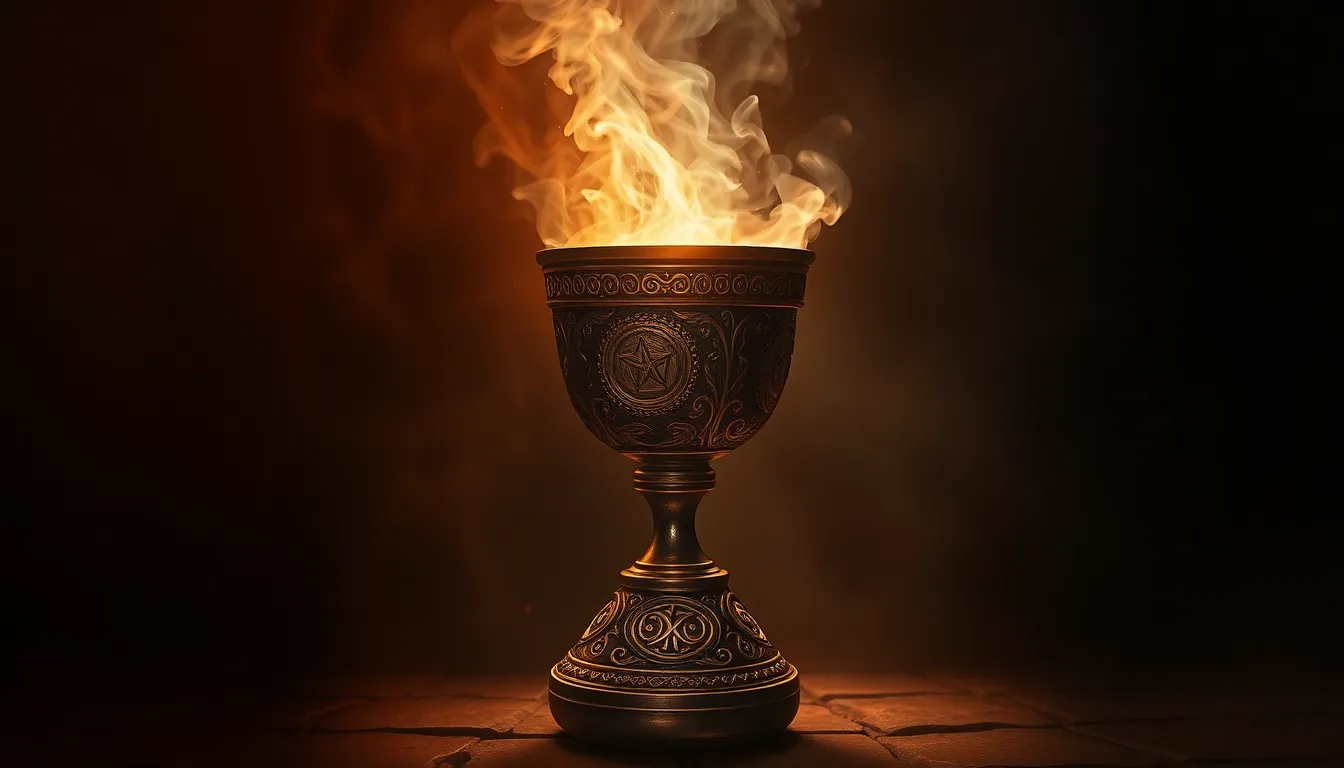The Chalice of Immortality: Drinking from the Fountain of Youth
I. Introduction
The “Chalice of Immortality” symbolizes humanity’s relentless pursuit of eternal life and youth. This concept has intrigued civilizations throughout history, representing not only the desire to escape mortality but also the quest for meaning and purpose in life. The notion of the Fountain of Youth has captivated imaginations, inspiring countless tales, explorations, and research endeavors aimed at unlocking the secrets of longevity.
This article aims to delve into the historical context of the Fountain of Youth, explore the symbolism of the chalice, examine scientific perspectives on aging, and consider philosophical and spiritual dimensions surrounding the quest for immortality. By understanding these elements, we can appreciate how the desire for eternal life has shaped human culture and continues to influence contemporary society.
II. Historical Context of the Fountain of Youth
A. Origins of the myth in ancient cultures
The concept of a rejuvenating spring or chalice has roots in various ancient cultures:
- Greek and Roman references: Ancient Greeks believed in the myth of Tithonus, who was granted eternal life but not eternal youth. Romans often sought elixirs of life, reflecting their desire for longevity.
- Indigenous legends and their interpretations: Native American tribes spoke of sacred waters that could restore youth, paralleling the quest for vitality present in many cultures.
B. Exploration and the quest for immortality in the Age of Discovery
During the Age of Discovery, many explorers sought the legendary Fountain of Youth, believing it held the key to eternal life:
- Ponce de León: The Spanish explorer is famously associated with the search for the Fountain of Youth in present-day Florida, although historical evidence suggests he was more interested in colonization.
- Other historical figures: Explorers and alchemists throughout history, such as Sir Francis Drake and Nicholas Flamel, also sought substances believed to grant immortality, reflecting a widespread obsession with eternal youth.
III. The Symbolism of the Chalice
A. The chalice as a representation of divine grace and eternal life
The chalice often symbolizes divine grace, purity, and the promise of eternal life, transcending mere physical existence. It embodies the hope of regeneration and the spiritual quest for transcendence beyond mortality.
B. Cultural depictions in literature and art
The chalice has been depicted in various forms of art and literature, often representing the ultimate reward for virtue:
- In the Holy Grail legend, the chalice signifies divine communion and the quest for spiritual enlightenment.
- In Renaissance paintings, it is frequently portrayed in the context of the Last Supper, embodying both sacrifice and immortality.
C. Psychological implications of seeking immortality
The pursuit of immortality through the chalice can reveal deep psychological desires:
- The fear of death and the unknown drives many to seek eternal life.
- The quest for legacy and the desire to be remembered can also fuel this pursuit, as individuals yearn for their existence to have lasting significance.
IV. Scientific Perspectives on Aging and Immortality
A. Current understanding of aging and biological immortality
Modern science has made significant strides in understanding the biological processes of aging. Research suggests that aging is not merely a result of time but involves complex genetic and environmental interactions.
B. Advances in medicine and technology aimed at extending life
Several scientific advancements are focused on prolonging life and enhancing health:
- Anti-aging research: Studies on telomeres, cellular senescence, and regenerative medicine aim to slow aging and improve quality of life.
- Genetic manipulation: Techniques such as CRISPR are being explored for their potential to edit genes associated with aging and disease.
C. Ethical considerations surrounding immortality research
As scientists push the boundaries of life extension, ethical dilemmas emerge:
- Questions about equitable access to anti-aging treatments.
- The implications of population growth and resource allocation.
- Concerns regarding the societal impact of prolonged life on relationships and societal structures.
V. The Chalice in Popular Culture
A. Representation in film, literature, and media
The chalice and the concept of immortality have permeated popular culture:
- In films like Indiana Jones and the Last Crusade, the search for the Holy Grail symbolizes the ultimate quest for eternal life.
- Literature, such as The Picture of Dorian Gray by Oscar Wilde, explores the consequences of seeking eternal youth.
B. Analysis of modern adaptations and their societal implications
Contemporary adaptations often reflect current societal anxieties about aging and death. They explore themes of obsession, morality, and the consequences of defying the natural order.
C. The impact of these representations on public perception of immortality
Popular culture shapes public perception, romanticizing the idea of immortality while simultaneously warning of its dangers. This duality influences societal values and individual aspirations regarding life and death.
VI. Myth vs. Reality: The Search for the Fountain of Youth
A. Debunking common myths associated with immortality
Many myths surrounding immortality lack scientific basis. The idea of a single elixir or fountain that can grant eternal life oversimplifies the complexities of aging and health.
B. Exploring the psychological and societal implications of the immortality quest
The quest for immortality can lead to both positive and negative outcomes:
- Positive: It inspires advancements in health and wellness.
- Negative: It can foster unhealthy obsessions with youth and beauty, leading to mental health issues.
C. Case studies of contemporary individuals and their quests for longevity
Many modern figures advocate for longevity, including biohackers and wellness entrepreneurs, reflecting a cultural shift towards self-optimization. Their pursuits raise questions about the ethics and feasibility of extreme life extension.
VII. Philosophical Perspectives on Immortality
A. The meaning of life and the desire for eternal existence
The pursuit of immortality often provokes existential questions about the meaning of life. If life can be extended indefinitely, what purpose does it serve?
B. Existential questions raised by the pursuit of immortality
Philosophers argue that eternal life may lead to ennui and a lack of purpose, challenging the very fabric of human experience.
C. The concept of legacy versus physical immortality
Many argue that leaving a legacy—through art, literature, or contributions to society—can be a more meaningful pursuit than physical immortality, providing a sense of purpose beyond mere existence.
VIII. The Role of Spirituality and Religion
A. Immortality in different religious beliefs and practices
Various religions offer perspectives on immortality:
- Christianity: The promise of eternal life through faith.
- Buddhism: The cycle of rebirth and enlightenment as a form of spiritual immortality.
B. The relationship between faith, spirituality, and the quest for eternal life
Spiritual beliefs often provide comfort regarding mortality, framing death as a transition rather than an end.
C. Comparative analysis of spiritual versus material pursuits of immortality
While material pursuits focus on physical longevity, spiritual pursuits emphasize inner peace and enlightenment, suggesting that true immortality may lie in the soul’s journey rather than the body’s endurance.
IX. Future Implications of the Quest for Immortality
A. Potential societal changes if immortality becomes attainable
The quest for immortality could lead to significant societal shifts:




